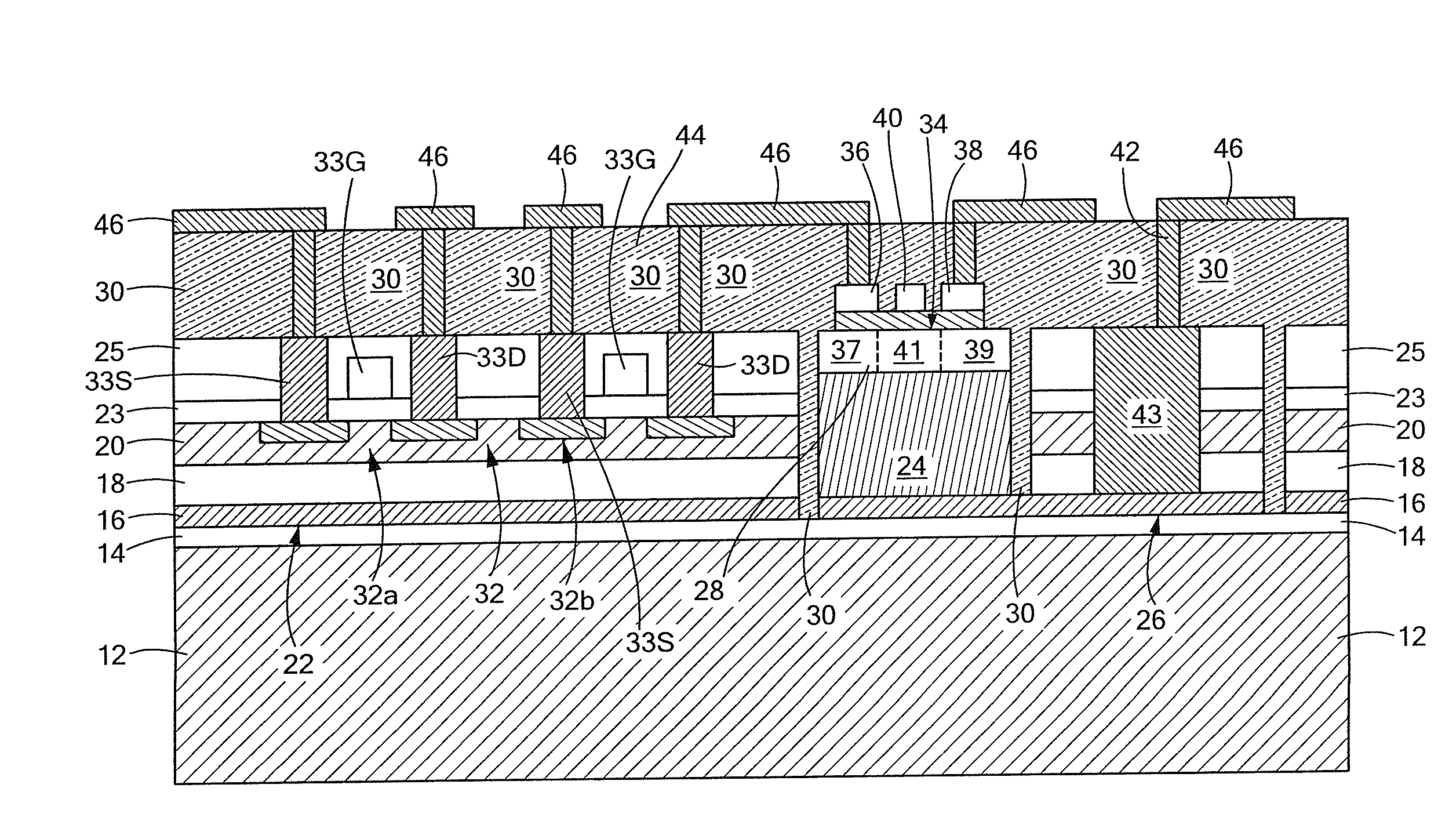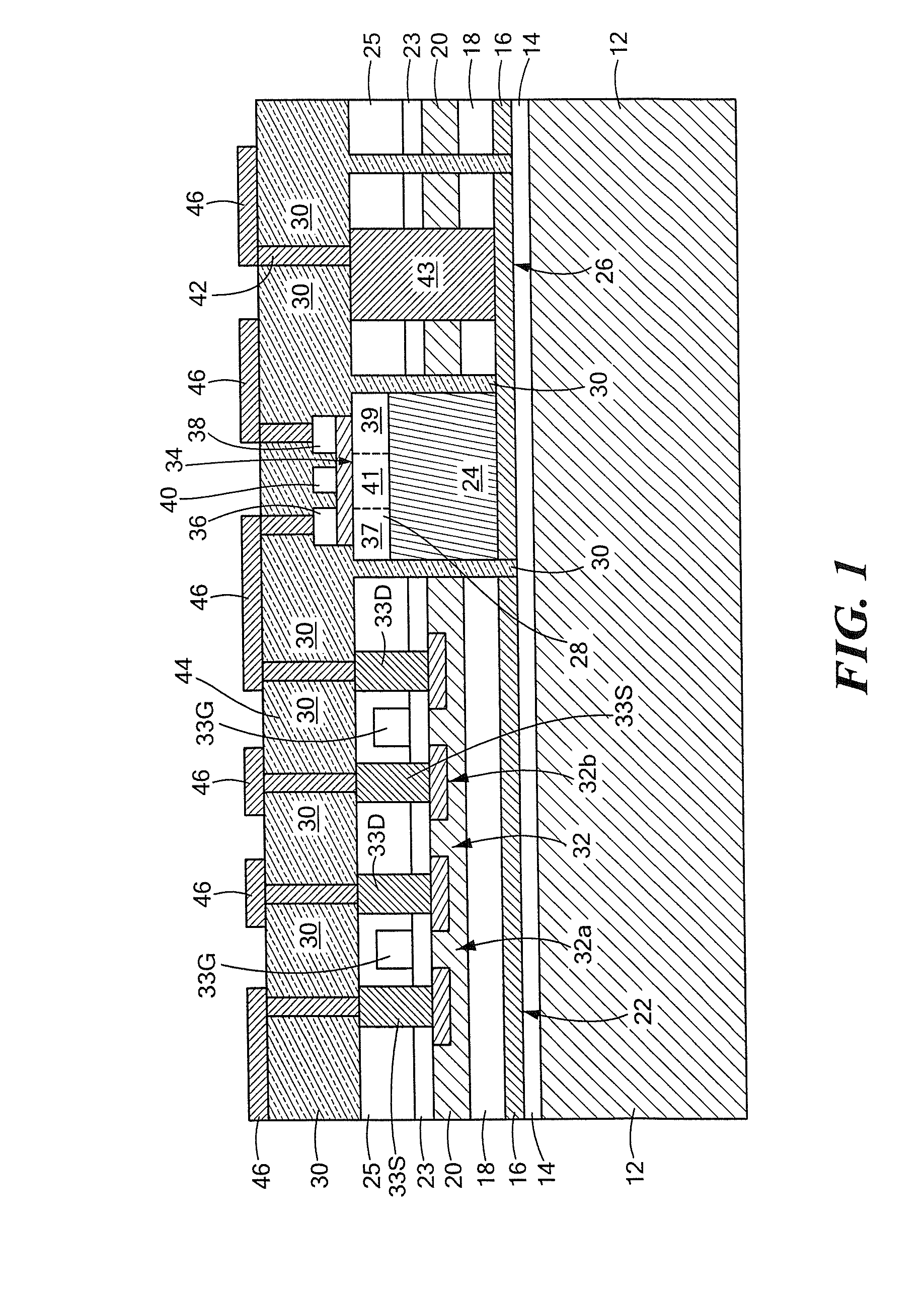Semiconductor structures having both elemental and compound semiconductor devices on a common substrate
a technology of semiconductor devices and semiconductor devices, applied in the field of semiconductor devices, can solve the problems of reducing the output of the device, reducing the isolation of the transistor used in switch-type circuits, and reducing the efficiency of the transistor used in amplifier-type circuits, so as to reduce the negative substrate effect of the device performance, the output conductance of the device is higher, and the output is less.
- Summary
- Abstract
- Description
- Claims
- Application Information
AI Technical Summary
Benefits of technology
Problems solved by technology
Method used
Image
Examples
Embodiment Construction
[0023]Referring now to FIG. 1, a semiconductor structure 10 is shown comprising: a substrate 12, here silicon; an insulating layer 14, here silicon dioxide, on the substrate 12; a seed layer 16, here germanium, on the insulating layer 14 and hence supported by the substrate 12; a second insulating layer 18, here silicon dioxide, on the seed layer 16; an elemental semiconductor layer 20, here silicon, disposed over a first portion 22, of the seed layer 16; and a compound semiconductor layer, here III-V material, such as, for example, GaAs or InP, buffer layer 24 disposed on a second portion 26 of the seed layer 16 and an active layer 28, here the same compound semiconductor material as layer 24. The first portion 22 of the seed layer 16 is electrically insulated from the second portion 26 of the seed layer 16 by an insulating material, 30, here for example, Benzocyclobutene (BCB).
[0024]At least one first semiconductor device, here a pair CMOS transistors 32, transistor 32a and 32b, i...
PUM
 Login to View More
Login to View More Abstract
Description
Claims
Application Information
 Login to View More
Login to View More - R&D
- Intellectual Property
- Life Sciences
- Materials
- Tech Scout
- Unparalleled Data Quality
- Higher Quality Content
- 60% Fewer Hallucinations
Browse by: Latest US Patents, China's latest patents, Technical Efficacy Thesaurus, Application Domain, Technology Topic, Popular Technical Reports.
© 2025 PatSnap. All rights reserved.Legal|Privacy policy|Modern Slavery Act Transparency Statement|Sitemap|About US| Contact US: help@patsnap.com



